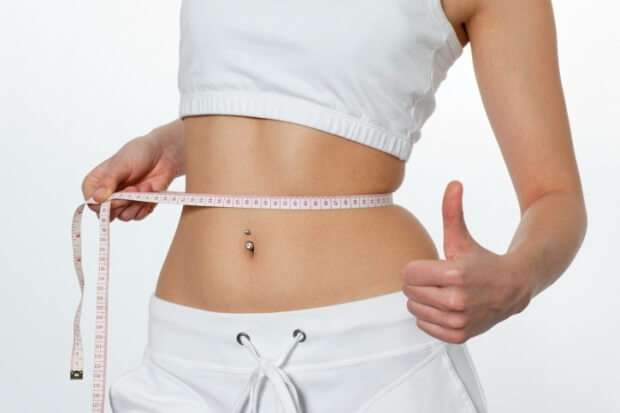HOW TO LOSE WEIGHT WITHOUT DIETING (8 simple ways,backed by science)

At a very basic level, losing weight requires eating fewer calories than you burn. (I know losing weight can be somewhat more complicated than that--and some people make it way more complicated than that--but in essence, that's how losing weight works.)
Of course, you can stack the odds even more in your favor. Exercise right after you wake up and before you eat breakfast and you can actually consume more calories and not gain weight, which should mean you will lose weight if you keep your food intake steady. You can try a ketogenic diet to lose weight and reduce body fat. You can try intermittent fasting. (Here's a beginner's guide to intermittent fasting.)
Another cool way is to harness the power of choice architecture and create an environment that makes it easier to eat healthy. Start taking a few simple steps, and put a few simple things in place, and you'll need less willpower and determination. You'll actually eat healthier without even trying.
For starters:
1. Eat four or five almonds 15 minutes before every meal.
I'm sure there's science behind this, but here's what I know: I'm always less hungry, and therefore eat less, when I eat four or five almonds 15 minutes before a meal.
Plus, a little healthy fat is good for you.
2. Drink a glass of water right before every meal.
Drinking more water is good for you. Plus, you'll partly fill your stomach and will feel full faster. We tend to eat for taste, which means we eat past the point of feeling full--and that's one reason we put on weight.
Then:
3. Use short, wide glasses for liquids you want to drink more of, and tall, skinny glasses for liquids you want to use less of.
As Darya Rose says on Summer Tomato, "Height makes things look larger than width, even when the volumes are the same."
Use a tall glass and you'll think you're drinking more and will naturally drink less; use a short, wide glass and you'll think you're drinking less--and will naturally drink more.
4. Start using smaller plates.
The same principle applies. A full plate feels like a full meal, so the bigger the plate, the less you think you're eating.

According to research by Dr. Brian Wansink, people who used a 10-inch diameter plate instead of a 12-inch diameter plate ate less food with no effect on their perceived fullness or satisfaction.
And you can too.
But where your plates are concerned, don't stop there...
5. Use plates that contrast with the color of your food.
Wansink also found that the color of your plate makes a difference. On average, changing the color of the plate so it contrasted with the food (think red sauce pasta on a white plate) reduced how much people served themselves by 21 per cent. If the plate was the same or a similar color, study participants tended to serve themselves 30 percent more food.
These results occur without conscious thought. Choice architecture--and the unconscious decisions it produces--can either work for you or against you.
Now let's work on simple ways to make healthy eating choices when you're not sitting at the table:
6. Hide the unhealthy stuff...
Tons of studies have shown that we snack on what we see. If the potato chips are tucked away on the top shelf and bananas are in a bowl on the counter...I'm almost certain to eat a banana. Make it hard to reach for the unhealthy stuff and supremely easy to grab a healthy option.
Do the same thing in your refrigerator. Put less healthy leftovers in aluminum foil or colored containers, and store the healthy stuff in plastic wrap or clear containers. What you see is what you tend to eat.
7. And wherever you can, eliminate choices altogether.
Say you want to drink more water and less soda. Great: Keep two or three water bottles on your desk. When you're thirsty, you won't have to get up and make a decision between water and soda--you can just grab a bottle of water.
The same is true for snacks. I used to keep a bowl of apples on my desk. That made snacking a no-brainer--which means willpower wasn't necessary. And I always keep protein bars and water bottles in my vehicle; that way, if I'm out and around and happen to get hungry, I don't need to decide whether or not I'll stop for fast food. I just grab a bar.
8. Never eat from the package.
Portion control starts with knowing the size of the portion, and when you eat directly from the container, how can you know? You can't--and you overeat.
I definitely do that with ice cream. I can fill a (really small) bowl with ice cream and be happy when I'm done...but if I eat directly from the container, I can go through half of a half-gallon of ice cream in no time. (Actually, the best way for me to control my ice cream portions is to ensure there is never ice cream in the house; ice cream is definitely my food Achilles' heel.)
If you're going to have crackers, chips, cookies, ice cream--anything that you want to make sure you don't overeat--always take the portion you want to eat out of the container and put it on a plate or in a bowl.
And then eat it slowly. Why not savor what you eat? You'll enjoy it more--and you'll be less likely to eat more simply for the taste.



Comments
Post a Comment